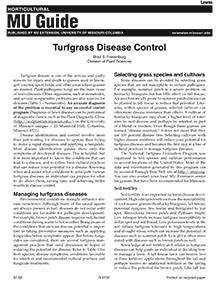

Turfgrass Disease Control
Revised
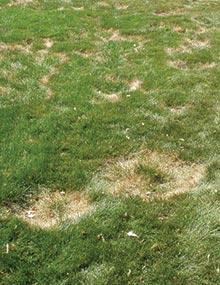
Identification and Management of Turfgrass Diseases, Page 16
Reviewed
Necrotic ring spot is a destructive disease of Kentucky bluegrass, but may also occur on red fescue and annual bluegrass. The disease is particularly damaging to bluegrass.
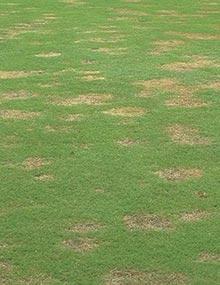
Identification and Management of Turfgrass Diseases, Page 19
Reviewed
Spring dead spot is a destructive disease of common bermudagrass and bermudagrass hybrids throughout the northern range of its adaptation in the U.S.
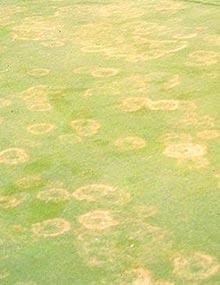
Identification and Management of Turfgrass Diseases, Page 22
Reviewed
Yellow patch is a cool-season disease that occurs on bentgrass and annual bluegrass putting greens and sometimes on higher-gut Kentucky bluegrass.
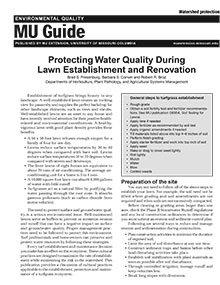
Protecting Water Quality During Lawn Establishment and Renovation
Reviewed
Establishing a healthy lawn enhances your landscape and benefits the environment. Learn best practices to protect water quality during lawn establishment.
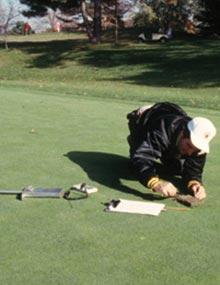
Identification and Management of Turfgrass Diseases, Page 02
Reviewed
Learn to diagnose turfgrass diseases by identifying host plants, assessing environmental conditions, and observing damage patterns for effective management.

Identification and Management of Turfgrass Diseases, Page 05
Reviewed
Brown patch is a sheath- and leaf-blighting summer disease that is common on tall fescue and bentgrass. It is particularly severe on tall fescue. With increased use of tall fescue in urban and commercial landscapes, brown patch has become a significant management problem.
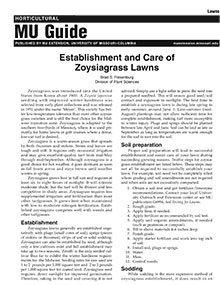
Establishment and Care of Zoysiagrass Lawns
Reviewed
Guide to establishing and maintaining zoysiagrass lawns, covering planting methods, soil prep, and care tips for a healthy, low-maintenance turf.
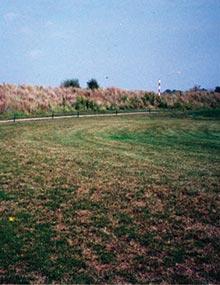
Identification and Management of Turfgrass Diseases, Page 08
Reviewed
Learn to identify and manage dollar spot, a common turfgrass disease affecting bentgrass and bluegrass, with symptoms, conditions, and control methods.
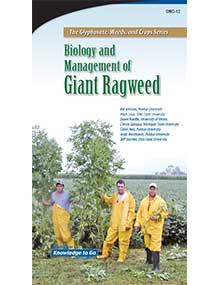
Biology and Management of Giant Ragweed
Reviewed
Editor’s note
The following abstract describes a publication that is only available as a downloadable PDF.
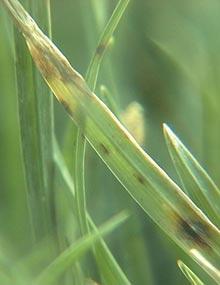
Identification and Management of Turfgrass Diseases, Page 11
Reviewed
Gray leaf spot, also called blast, occurs in most areas of the country where perennial ryegrass is grown. Disease development is sporadic with little or no disease development in some years. Nevertheless, the potential destructiveness of gray leaf spot forces many turfgrass managers to apply preventive fungicide applications every year.

Facts About Glyphosate-Resistant Weeds
Reviewed
Editor’s note
The following abstract describes a publication that is only available as a downloadable PDF.
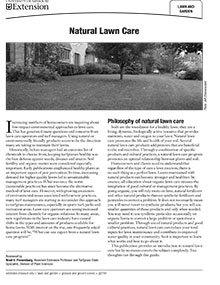
Natural Lawn Care
Reviewed
Learn lawn care practices that promote soil health, reduce the need for synthetic products, and improve water quality for a healthier, eco-friendly lawn.
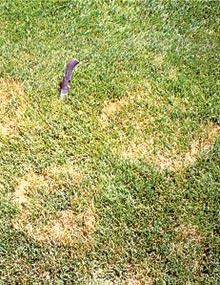
Identification and Management of Turfgrass Diseases, Page 14
Reviewed
Rhizoctonia zeae forms pink to orange bulbils (resting structures). The fungus has been observed with increasing frequency since the early 2000s.
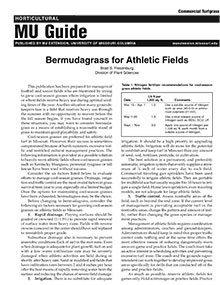
Bermudagrass for Athletic Fields
Reviewed
Bermudagrass offers a durable turf solution for athletic fields facing challenges with cool-season grasses due to limited irrigation and heavy use.
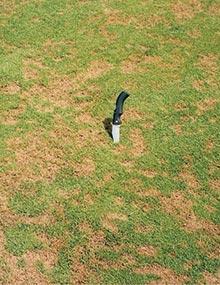
Identification and Management of Turfgrass Diseases, Page 17
Reviewed
Pythium foliar blight is one of the most feared turfgrass diseases, because the disease develops rapidly during periods of high temperature and high relative humidity. If left untreated, extensive loss of turf can occur in a few days.

Identification and Management of Turfgrass Diseases, Page 20
Reviewed
Summer patch, sometimes referred to as frogeye patch, is a destructive disease of Kentucky bluegrass maintained for golf course fairways, green surrounds, parks and residential landscapes

Identification and Management of Turfgrass Diseases, Page 23
Reviewed
Yellow tuft is a cool-season disease that is commonly observed on creeping bentgrass and intensively managed Kentucky bluegrass.

Pecan Pest Management: Insects and Diseases
Reviewed
This guide details pecan insect pests and diseases that can cause economic losses to Missouri producers.

Sewer Line Chemical Root Control (Category 5B)
Reviewed $40
This manual contains information that applicators must be familiar with to become a certified sewer line root control applicator.

Controlling Nuisance Muskrats in Missouri Ponds and Lakes
Reviewed
Muskrats can damage ponds and crops through burrowing and feeding. This guide outlines effective control methods.

Controlling Vole Damage in No-Till Corn and Soybeans
Reviewed
Voles in no-till fields can reduce corn and soybean stands by up to 100%. Learn to identify damage and manage vole populations before planting.

Managing Skunk Problems in Missouri
Reviewed
Striped and eastern spotted skunks inhabit diverse environments and may cause issues like lawn damage, poultry predation, and unpleasant odors.

Controlling Rats
Reviewed
Norway rats are stocky burrowing rodents that were unintentionally introduced into North America by settlers who arrived on ships from Europe. Also called brown rats or sewer rats, these destructive pests are found in and around towns and farms throughout Missouri. This guide provides information on how to recognize and manage a rat infestation.

Controlling Snakes After a Storm or Flood
Reviewed
Snakes often become displaced after a storm or flooding event. As a result, many of these animals are seeking shelter and food in areas close to people. Read more to find out what to do when you encounter one.